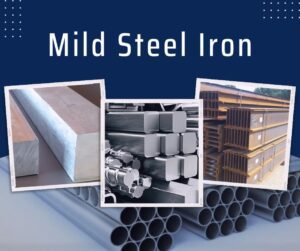Iron: Exploring the Differences, Properties, and Uses of Wrought and Cast Iron
Iron is a highly versatile and widely used metal that has been used for various purposes throughout history. There are two primary forms of iron: wrought iron and cast iron. In this article, we’ll explore the differences between the two types of iron, their properties, and their uses.
Wrought Iron:
Wrought iron is a type of iron that is made by refining pig iron. Pig iron is a crude form of iron that is produced by smelting iron ore in a blast furnace. The pig iron is then refined by melting it in a furnace with iron oxide, which removes impurities and excess carbon. The resulting iron is then shaped into bars or sheets using a process called forging.
Wrought iron is known for its high ductility, or ability to be stretched without breaking, and its low carbon content. It is also highly resistant to rust and corrosion, making it ideal for outdoor applications. Wrought iron has a fibrous texture and a matte finish, which gives it a distinctive appearance.
Wrought iron has been used for centuries to create decorative and functional items such as gates, fences, railings, and furniture. It is also used in the construction of bridges and other large structures. In addition, wrought iron is still used in the production of some hand tools, such as hammers and chisels.
Cast Iron:
Cast iron is a type of iron that is made by melting pig iron with scrap iron and adding alloying elements such as carbon, silicon, and manganese. The molten iron is then poured into molds, where it cools and solidifies into the desired shape.
Cast iron is known for its high carbon content, which gives it a hard and brittle texture. It is also highly resistant to wear and tear, making it ideal for applications that require strength and durability. Cast iron has a smooth and shiny finish, which gives it a distinct appearance.
Cast iron has been used for centuries to create a wide range of items, from cookware and pipes to machinery and engine blocks. It is also commonly used in the construction of buildings, bridges, and other structures that require strength and durability.

Differences between Wrought Iron and Cast Iron:
The primary difference between wrought iron and cast iron is in their composition and properties. Wrought iron has a low carbon content and is highly ductile, while cast iron has a high carbon content and is hard and brittle.
Wrought iron is also more resistant to rust and corrosion than cast iron, making it ideal for outdoor applications. Cast iron, on the other hand, is highly resistant to wear and tear, making it ideal for applications that require strength and durability.
In terms of appearance, wrought iron has a fibrous texture and a matte finish, while cast iron has a smooth and shiny finish.
Uses of Wrought Iron and Cast Iron:
Wrought iron and cast iron are both used in a wide range of applications, from decorative and functional items to large structures and machinery.
Wrought iron is commonly used to create gates, fences, railings, and furniture. It is also used in the construction of bridges and other large structures.
Cast iron is commonly used to create cookware, pipes, machinery, and engine blocks. It is also used in the construction of buildings, bridges, and other structures that require strength and durability.
Conclusion:
In conclusion, wrought iron and cast iron are two distinct types of iron that have different properties and uses. Wrought iron is highly ductile, resistant to rust and corrosion, and has a fibrous texture and matte finish. Cast iron is hard and brittle, highly resistant to wear and tear, and has a smooth and shiny finish. Both types of iron have been used for centuries in a wide range of applications, from decorative and functional items to large structures and machinery.
Read More Bronze: An Overview Of The Types And Composition Of This Versatile Alloy
Comments are closed.